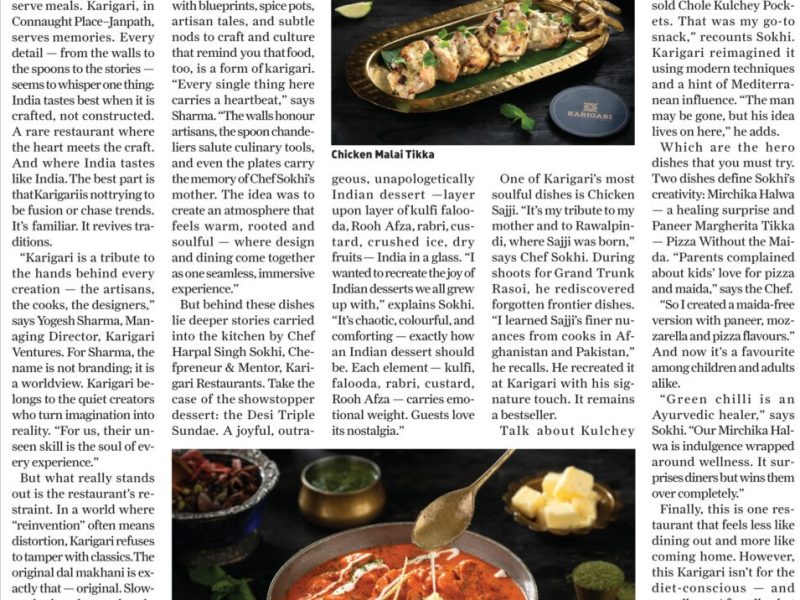Exotic fruits are becoming increasingly popular around the world as people are interested in adding new flavour as well as sensory experiences to their diets. The likes of Avocado, figs, blueberries are fast becoming a captivating category of dry/fresh fruits as they bring forth unique flavour, vibrant colours and distinctive appearances to your palette
“Recently a colleague treated us to Uzbekistan plums–they were delicious, and I have never eaten anything like them,” says Delhi based journalist Parag Nagpal.
Welcome to the world of exotic fruits. The vibrant pink dragonfruit, the horned kiwano with a bright orange interior, the heart-shaped Cherimoya with a creamy, custard-like flesh or the hairy Rambutan with a sweet, juicy interior and the list goes on. For Chayanika, a 14 year old – “My wishlist for anyone going to Khan market earlier would include blueberries and red berries. But now dad orders it on amazon and other online portals. He knows that instead of mithai and even chocolates, I relish these exotic fruits and he encourages me to cultivate this habit as he finds solace in the idea that it helps him replace junk food like chocolates with these flavourful fruits.”
As someone said- To eat is a necessity, but to eat intelligently is an art. Fruits are an essential part of a healthy and balanced diet. They are an excellent source of essential minerals and vitamins and have a high fibre content. They also provide a wide range of health-improving antioxidants, including flavonoids. Berries and citrus fruits, in particular, are believed to be powerful for preventing disease.
In 2023, as per data from Agricultural and Processed Food Products Export Development Authority (APEDA) (Ministry of Commerce & Industry, Govt. of India) the total area under cultivation for dragon fruit stood at 3,000 hectares. With increased demand, the government expects this to rise to up to 50,000 hectares in five years under the Mission for Integrated Development of Horticulture (MIDH) program. The total area under kiwi fruit cultivation in India is 5,000 hectares, yielding 16,000 MT production in FY2023, compared to negligible production in 2010, agriculture ministry data showed.
Producers and marketers for exotic fruits in India value the domestic market at an estimated Rs 3,000 crores with core demand emerging from the top four metros, state capitals and tourist spots. Indian farmers are rapidly adopting the cultivation of exotic and premium fruits like avocados, blueberries, dragon fruit, and kiwis, fuelled by their growing preference in the domestic market and burgeoning exports. These fruits offer up to 50% higher returns than other local fruits, according to experts. Recognising the market potential, the Ministry of Agriculture and Farmers’ Welfare has identified ten globally popular exotic fruit crops of commercial importance – avocado, blueberry, dragon fruit, figs, kiwi, mangosteen, persimmon, passion fruits, rambutans and strawberries, and directed state horticulture departments to expand the area under cultivation of these crops.
Top Trending Fruits
“I love my avocado toast for breakfast everyday,” says 15 year old Simran Kaur, a student of Class tenth in a Mumbai school. Avocado is the top trending exotic fruit which comes from Central America and Mexico and is loved for its creamy and nutty flavour with a smooth texture. Its demand has been increasing due to its health benefits and versatility in culinary uses.
The Medjool Dates have a rich, caramel-like flavour with a chewy texture. It has high demand during festive seasons and among health-conscious consumers. The Black Mission Figs from Spain have a sweet, honey-like taste with a hint of berry, soft and chewy texture. Its demand is moderate, mainly among gourmet food enthusiasts and for use in high-end culinary applications. The Dragon Fruit (Pitaya) originating from Central America is mildly sweet, often compared to a cross between a kiwi and a pear, with a crunchy texture. Its demand is growing due to its health benefits and unique appearance. Other fruits include the Mangosteen from Southeast Asia, Kiwi originally from China, but widely cultivated in New Zealand, Blueberries from North America, Goji Berries from China and Passion Fruit from South America and Durian from Southeast Asia.
Healthwise, how do these pricey fruits work on one’s body and which ones are especially recommended by health experts. According to Chandigarh based health and fat loss coach Jashan Vij, “As a fitness coach, I prefer and recommend my clients to incorporate a variety of globally sourced dry and fresh fruits as they can significantly enhance the diet. In addition to Californian almonds and avocados, consider adding Medjool dates from the Middle East, which are excellent for quick energy boosts and rich in potassium. Turkish figs are another great option, offering high fiber content and natural sweetness. For a powerhouse of antioxidants, blueberries from North America are a fantastic choice, supporting recovery and reducing inflammation. Additionally, Indian pomegranates are packed with antioxidants and have anti-inflammatory properties, making them ideal for post-workout recovery. These fruits not only provide essential nutrients but also cater to different dietary needs, enhancing overall health and fitness performance. Incorporating a diverse range of dry and fresh fruits ensures a balanced intake of vitamins, minerals, and antioxidants, supporting both physical and mental well-being.”
“The demand has definitely grown for all exotic dry and fresh fruits with an increase in people’s purchasing power and their health benefits coming into light. Dieticians actively promote such dry fruits as super foods which are trickling into healthy recipes now,” says Sumit Narang, founder SBN Foods, retailers of premium dry and fresh fruits. He adds that dry fruits like hazelnuts, macadamia nuts are known to have health benefits, and help in managing thyroid. He shares how someone once told him that hazel nuts are gaining popularity even in the bread spread category. Almond’s price can range from Rs 700-4,000/kg and in almonds itself there are so many varieties. They are categorised from the source they are coming from such as Californian, Afghanistan, Iranian almonds and Australian almonds. Mostly these high end dry fruits are imported. Then you have pine nuts which are grown in India and costliest of them all at Rs 7,000-8000 per kg and their rarity boosts their price.
What about the quantity and timing of consumption of these exotic fruits? The quantity and timing of fruit consumption are crucial for maximizing their benefits. Says Jashan Vij, “For dry fruits like almonds, dates, and walnuts, a typical serving size is around 20-30 grams per day. This equates to approximately a small handful of almonds or a few dates, which provide a concentrated source of nutrients and energy. Fresh fruits, such as a medium-sized avocado, a cup of blueberries, can be consumed in one to two servings daily.”
Dry fruits are best consumed as mid-morning or afternoon snacks. They provide a quick energy boost and help maintain blood sugar levels between meals. Balancing the intake of dry and fresh fruits throughout the day ensures sustained energy levels, supports recovery, and enhances overall nutritional intake. Tailoring the quantity and timing to individual needs and fitness goals can optimize the benefits derived from these nutrient-dense foods.
Price Chart
Exotic fruits are available throughout the year, albeit for a premium. Sample the price at which you will get them here, through this price chart below:
| Fruit | Price (per kg) | Origin |
| Avocado | ₹350 – ₹800 | Central America |
| Medjool Dates | ₹1500 – ₹2300 | Morocco |
| Black Mission Figs | ₹1300 – ₹2000 | Spain |
| Dragon Fruit | ₹300 – ₹500 | Central America |
| Mangosteen | ₹600 – ₹800 | Southeast Asia |
| Kiwi | ₹400 – ₹700 | China, New Zealand, Italy and Chile |
| Blueberries | ₹1200 – ₹2500 | North America |
| Goji Berries | ₹1800 – ₹2300 | Central and South America |
| Passion Fruit | ₹400 – ₹750 | South America |
| Durian | ₹1200-₹1800 | Southeast Asia |




